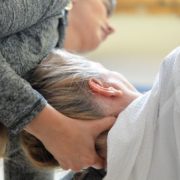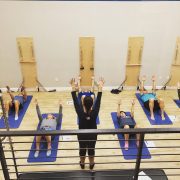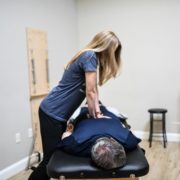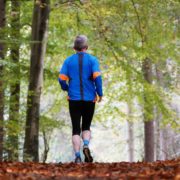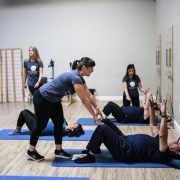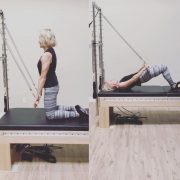How to Keep Knee or Back Pain from Derailing your New Year’s Goals
The most popular goals for the New Year continue to revolve around weight loss and exercise. But here is one thing that can get in your way when pursuing those goals… unresolved back or knee pain. So many people make the mistake of thinking that exercise or weight loss alone, is going to “cure” their nagging pain. But that’s not always the case.
Here are some top tips and advice I give all my clients around this time of year to help you get the most out of your health and fitness goals for 2021, and NOT let something like back or knee pain get in your way…
Mobility before Stability
Your muscles can’t function at their best if you don’t have optimal joint mobility. In other words, you don’t want to strengthen around a joint that isn’t moving at its best, or you’ll encourage compensation. If your nagging back or knee pain is due to inadequate mobility, you’ll run into problems (and more pain) if you suddenly increase your exercise or activity level. We saw this happen at the beginning of the pandemic. People started walking and exercising more and we saw a huge influx of unexpected back and knee pain as a result. Their joints weren’t accustomed to moving so much and it highlighted the lack of mobility and compensations. Don’t let the same thing happen to you! Make sure all of your joints, including your spine, can move fully and freely without any pain before you begin a new exercise program.
Pace yourself
It’s very tempting to go “all in” on your new exercise or weight loss goal… but remember, the tortoise won the race, not the hare. It’s important to not beat yourself up if you’re not seeing immediate results. If you’ve been out of shape for a while and doing something completely new, expect to be sore. But if you’re limping around for days or experiencing sharp pain in your back or knee, there is a chance you overdid it.
My general rule of thumb is to monitor your soreness on a scale of one to ten. I tell my clients to not let their pain go above a five when they are pushing themselves or returning to an exercise we haven’t tried in a while. If you find that your pain level goes above a six, or persists at that level (or higher) for more than a day, there’s a chance you’re overdoing it and setting yourself up for an unwanted injury. When in doubt, listen to your body. And if you’re not sure what it’s saying to you, enlist the help of experts like us!
Stay Hydrated
Most people don’t drink enough water during their regular day, never mind when they increase their activity level. Drinking lots of water has two great benefits. It will give you the extra hydration you need if you’re planning to be more active. And it will help you lose weight by curbing your appetite. Some additional benefits of staying hydrated include increased muscle strength and stamina, more lubrication in your joints, more supple skin, better cardiovascular function, and improved energy and mental alertness. One really easy tip to jumpstart your day is to begin with 10 oz of water first thing upon waking. A good place to start when you’re trying to stay adequately hydrated is to drink at least half your body weight (in ounces) of water every day.
Get assessed by a movement expert
If you’ve already got some nagging back and knee pain, do yourself a favor and get assessed by a movement expert FIRST, before you begin your new exercise routine or New Year’s goal. Your first thought might be to go see your medical doctor, which of course isn’t a bad idea, but it’s important you understand how different medical professionals look at you when you have knee or back pain.
Medical doctors are trained to screen your whole body and spot for serious problems. If you see them for musculoskeletal pain, they will typically take X-rays and MRI’s to make sure there are no broken bones or serious pathologies. They do not have extensive training to assess how your pain behaves during movement or exercise, which is the majority of people’s problems. That’s where we come in.
A specialty practice like ours will be able to assess your movement in detail, through various movement tests, which will tell a much better story about how your pain may or may not impact the new exercise or weight loss program you’re about to start. Plus, once we know how your pain behaves, what the triggering patterns are, we can also teach you how to control it – so that you don’t have to let nagging back or knee pain derail your 2021!
I hope your New Year is off to an amazing start, and if you want to ensure that back or knee pain doesn’t get in the way of that, reach out for a FREE 30 minute Discovery Session. We would love to talk with you about your goals and be part of your support team as we all launch into 2023!


